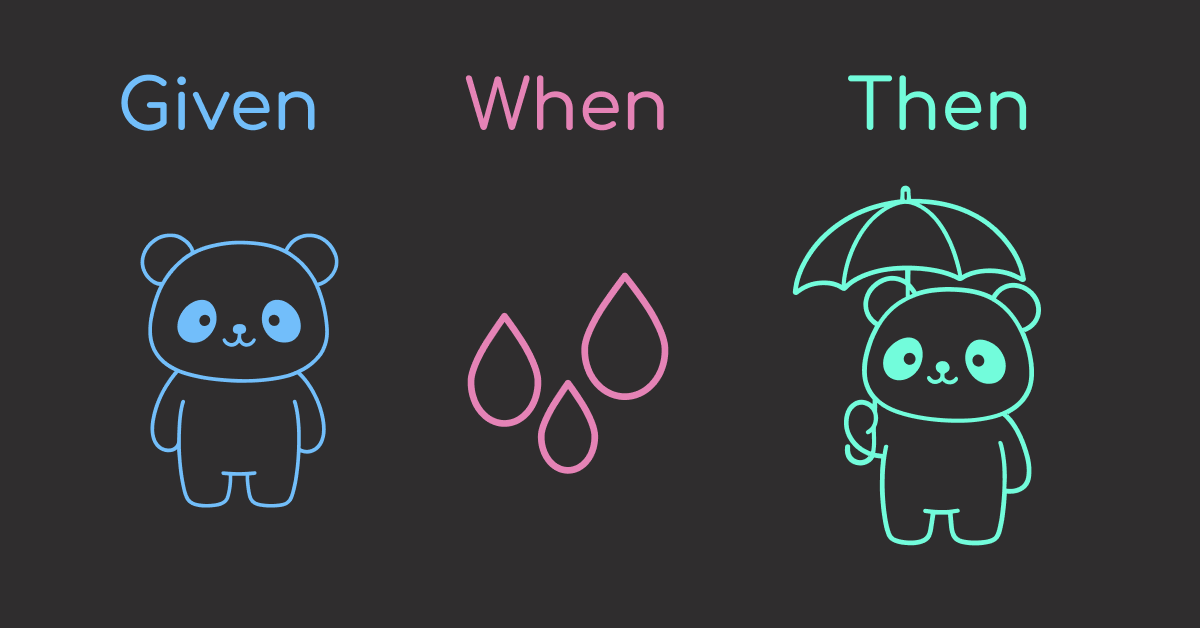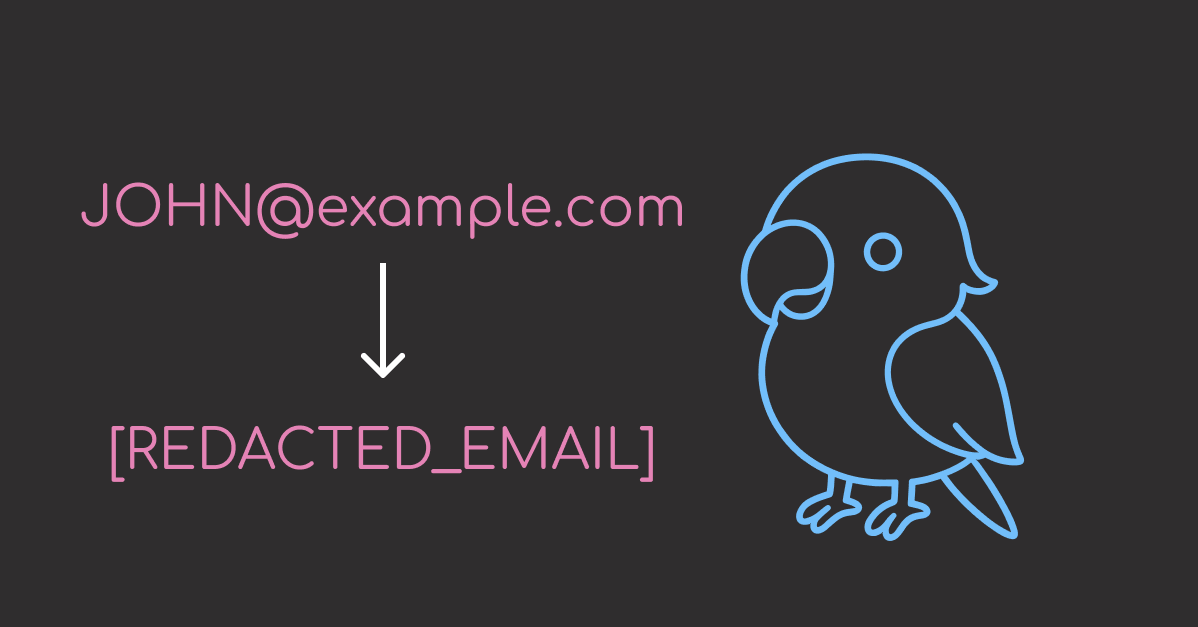Table of Contents
- Introduction to RAG Systems
- Document Ingestion with MarkItDown
- Intelligent Chunking with LangChain
- Creating Searchable Embeddings with SentenceTransformers
- Building Your Knowledge Database with ChromaDB
- Enhanced Answer Generation with Open-Source LLMs
- Building a Simple Application with Gradio
- Conclusion
Introduction
Have you ever spent 30 minutes searching through Slack threads, email attachments, and shared drives just to find that one technical specification your colleague mentioned last week?
It is a common scenario that repeats daily across organizations worldwide. Knowledge workers spend valuable time searching for information that should be instantly accessible, leading to decreased productivity.
Retrieval-Augmented Generation (RAG) systems solve this problem by transforming your documents into an intelligent, queryable knowledge base. Ask questions in natural language and receive instant answers with source citations, eliminating time-consuming manual searches.
In this article, we’ll build a complete RAG pipeline that turns document collections into an AI-powered question-answering system.
Key Takeaways
Here’s what you’ll learn:
- Convert documents with MarkItDown in 3 lines
- Chunk text intelligently using LangChain RecursiveCharacterTextSplitter
- Generate embeddings locally with SentenceTransformers model
- Store vectors in ChromaDB persistent database
- Generate answers using Ollama local LLMs
- Deploy web interface with Gradio streaming
💻 Get the Code: The complete source code and Jupyter notebook for this tutorial are available on GitHub. Clone it to follow along!
Introduction to RAG Systems
RAG (Retrieval-Augmented Generation) combines document retrieval with language generation to create intelligent Q&A systems. Instead of relying solely on training data, RAG systems search through your documents to find relevant information, then use that context to generate accurate, source-backed responses.
Environment Setup
Install the required libraries for building your RAG pipeline:
pip install markitdown[pdf] sentence-transformers langchain-text-splitters chromadb gradio langchain-ollama ollama
These libraries provide:
- markitdown: Microsoft’s document conversion tool that transforms PDFs, Word docs, and other formats into clean markdown
- sentence-transformers: Local embedding generation for converting text into searchable vectors
- langchain-text-splitters: Intelligent text chunking that preserves semantic meaning
- chromadb: Self-hosted vector database for storing and querying document embeddings
- gradio: Web interface builder for creating user-friendly Q&A applications
- langchain-ollama: LangChain integration for local LLM inference
Install Ollama and download a model:
curl -fsSL https://ollama.com/install.sh | sh
ollama pull llama3.2
Next, create a project directory structure to organize your files:
mkdir processed_docs documents
These directories organize your project:
processed_docs: Stores converted markdown filesdocuments: Contains original source files (PDFs, Word docs, etc.)
Create these directories in your current working path with appropriate read/write permissions.
Dataset Setup: Python Technical Documentation
To demonstrate the RAG pipeline, we’ll use “Think Python” by Allen Downey, a comprehensive programming guide freely available under Creative Commons.
We’ll download the Python guide and save it in the documents directory.
import requests
from pathlib import Path
# Get the file path
output_folder = "documents"
filename = "think_python_guide.pdf"
url = "https://greenteapress.com/thinkpython/thinkpython.pdf"
file_path = Path(output_folder) / filename
def download_file(url: str, file_path: Path):
response = requests.get(url, stream=True, timeout=30)
response.raise_for_status()
file_path.write_bytes(response.content)
# Download the file if it doesn't exist
if not file_path.exists():
download_file(
url=url,
file_path=file_path,
)
Next, let’s convert this PDF into a format that our RAG system can process and search through.
Document Ingestion with MarkItDown
RAG systems need documents in a structured format that AI models can understand and process effectively.
MarkItDown solves this challenge by converting any document format into clean markdown while preserving the original structure and meaning.
Converting Your Python Guide
Start by converting the Python guide to understand how MarkItDown works:
from markitdown import MarkItDown
# Initialize the converter
md = MarkItDown()
# Convert the Python guide to markdown
result = md.convert(file_path)
python_guide_content = result.text_content
# Display the conversion results
print("First 300 characters:")
print(python_guide_content[:300] + "...")
In this code:
MarkItDown()creates a document converter that handles multiple file formats automaticallyconvert()processes the PDF and returns a result object containing the extracted texttext_contentprovides the clean markdown text ready for processing
Output:
First 300 characters:
Think Python
How to Think Like a Computer Scientist
Version 2.0.17
Think Python
How to Think Like a Computer Scientist
Version 2.0.17
Allen Downey
Green Tea Press
Needham, Massachusetts
Copyright © 2012 Allen Downey.
Green Tea Press
9 Washburn Ave
Needham MA 02492
Permission is granted...
MarkItDown automatically detects the PDF format and extracts clean text while preserving the book’s structure, including chapters, sections, and code examples.
Preparing Document for Processing
Now that you understand the basic conversion, let’s prepare the document content for processing. We’ll store the guide’s content with source information for later use in chunking and retrieval:
# Organize the converted document
processed_document = {
'source': file_path,
'content': python_guide_content
}
# Create a list containing our single document for consistency with downstream processing
documents = [processed_document]
# Document is now ready for chunking and embedding
print(f"Document ready: {len(processed_document['content']):,} characters")
Output:
Document ready: 460,251 characters
With our document successfully converted to markdown, the next step is breaking it into smaller, searchable pieces.
Intelligent Chunking with LangChain
AI models can’t process entire documents due to limited context windows. Chunking breaks documents into smaller, searchable pieces while preserving semantic meaning.
Understanding Text Chunking with a Simple Example
Let’s see how text chunking works with a simple document:
from langchain_text_splitters import RecursiveCharacterTextSplitter
# Create a simple example that will be split
sample_text = """
Machine learning transforms data processing. It enables pattern recognition without explicit programming.
Deep learning uses neural networks with multiple layers. These networks discover complex patterns automatically.
Natural language processing combines ML with linguistics. It helps computers understand human language effectively.
"""
# Apply chunking with smaller size to demonstrate splitting
demo_splitter = RecursiveCharacterTextSplitter(
chunk_size=150, # Small size to force splitting
chunk_overlap=30,
separators=["\n\n", "\n", ". ", " ", ""], # Split hierarchy
)
sample_chunks = demo_splitter.split_text(sample_text.strip())
print(f"Original: {len(sample_text.strip())} chars → {len(sample_chunks)} chunks")
# Show chunks
for i, chunk in enumerate(sample_chunks):
print(f"Chunk {i+1}: {chunk}")
Output:
Original: 336 chars → 3 chunks
Chunk 1: Machine learning transforms data processing. It enables pattern recognition without explicit programming.
Chunk 2: Deep learning uses neural networks with multiple layers. These networks discover complex patterns automatically.
Chunk 3: Natural language processing combines ML with linguistics. It helps computers understand human language effectively.
Notice how the text splitter:
- Split the 336-character text into 3 chunks, each under the 150-character limit
- Applied 30-character overlap between adjacent chunks
- Separators prioritize semantic boundaries: paragraphs (
\n\n) → sentences (.) → words () → characters
Processing Multiple Documents at Scale
Now let’s a text splitter with larger chunks and apply it to all our converted documents:
# Configure the text splitter with Q&A-optimized settings
text_splitter = RecursiveCharacterTextSplitter(
chunk_size=600, # Optimal chunk size for Q&A scenarios
chunk_overlap=120, # 20% overlap to preserve context
separators=["\n\n", "\n", ". ", " ", ""] # Split hierarchy
)
Next, use the text splitter to process all our documents:
def process_document(doc, text_splitter):
"""Process a single document into chunks."""
doc_chunks = text_splitter.split_text(doc["content"])
return [{"content": chunk, "source": doc["source"]} for chunk in doc_chunks]
# Process all documents and create chunks
all_chunks = []
for doc in documents:
doc_chunks = process_document(doc, text_splitter)
all_chunks.extend(doc_chunks)
Examine how the chunking process distributed content across our documents:
from collections import Counter
source_counts = Counter(chunk["source"] for chunk in all_chunks)
chunk_lengths = [len(chunk["content"]) for chunk in all_chunks]
print(f"Total chunks created: {len(all_chunks)}")
print(f"Chunk length: {min(chunk_lengths)}-{max(chunk_lengths)} characters")
print(f"Source document: {Path(documents[0]['source']).name}")
Output:
Total chunks created: 1007
Chunk length: 68-598 characters
Source document: think_python_guide.pdf
Our text chunks are ready. Next, we’ll transform them into a format that enables intelligent similarity search.
Creating Searchable Embeddings with SentenceTransformers
RAG systems need to understand text meaning, not just match keywords. SentenceTransformers converts your text into numerical vectors that capture semantic relationships, allowing the system to find truly relevant information even when exact words don’t match.
Generate Embeddings
Let’s generate embeddings for our text chunks:
from sentence_transformers import SentenceTransformer
# Load Q&A-optimized embedding model (downloads automatically on first use)
model = SentenceTransformer('multi-qa-mpnet-base-dot-v1')
# Extract documents and create embeddings
documents = [chunk["content"] for chunk in all_chunks]
embeddings = model.encode(documents)
print(f"Embedding generation results:")
print(f" - Embeddings shape: {embeddings.shape}")
print(f" - Vector dimensions: {embeddings.shape[1]}")
In this code:
SentenceTransformer()loads the Q&A-optimized model that converts text to 768-dimensional vectorsmulti-qa-mpnet-base-dot-v1is specifically trained on 215M question-answer pairs for superior Q&A performancemodel.encode()transforms all text chunks into numerical embeddings in a single batch operation
The output shows 1007 chunks converted to 768-dimensional vectors:
Embedding generation results:
- Embeddings shape: (1007, 768)
- Vector dimensions: 768
Test Semantic Similarity
Let’s test semantic similarity by querying for Python programming concepts:
# Test how one query finds relevant Python programming content
from sentence_transformers import util
query = "How do you define functions in Python?"
document_chunks = [
"Variables store data values that can be used later in your program.",
"A function is a block of code that performs a specific task when called.",
"Loops allow you to repeat code multiple times efficiently.",
"Functions can accept parameters and return values to the calling code."
]
# Encode query and documents
query_embedding = model.encode(query)
doc_embeddings = model.encode(document_chunks)
Now we’ll calculate similarity scores and rank the results. The util.cos_sim() function computes cosine similarity between vectors, returning values from 0 (no similarity) to 1 (identical meaning):
# Calculate similarities using SentenceTransformers util
similarities = util.cos_sim(query_embedding, doc_embeddings)[0]
# Create ranked results
ranked_results = sorted(
zip(document_chunks, similarities),
key=lambda x: x[1],
reverse=True
)
print(f"Query: '{query}'")
print("Document chunks ranked by relevance:")
for i, (chunk, score) in enumerate(ranked_results, 1):
print(f"{i}. ({score:.3f}): '{chunk}'")
Output:
Query: 'How do you define functions in Python?'
Document chunks ranked by relevance:
1. (0.674): 'A function is a block of code that performs a specific task when called.'
2. (0.607): 'Functions can accept parameters and return values to the calling code.'
3. (0.461): 'Loops allow you to repeat code multiple times efficiently.'
4. (0.448): 'Variables store data values that can be used later in your program.'
The similarity scores demonstrate semantic understanding: function-related chunks achieve high scores (0.7+) while unrelated programming concepts score much lower (0.2-).
Building Your Knowledge Database with ChromaDB
These embeddings demonstrate semantic search capability, but memory storage has scalability limitations. Large vector collections quickly exhaust system resources.
Vector databases provide essential production capabilities:
- Persistent storage: Data survives system restarts and crashes
- Optimized indexing: Fast similarity search using HNSW algorithms
- Memory efficiency: Handles millions of vectors without RAM exhaustion
- Concurrent access: Multiple users query simultaneously
- Metadata filtering: Search by document properties and attributes
ChromaDB delivers these features with a Python-native API that integrates seamlessly into your existing data pipeline.
Initialize Vector Database
First, we’ll set up the ChromaDB client and create a collection to store our document vectors.
import chromadb
# Create persistent client for data storage
client = chromadb.PersistentClient(path="./chroma_db")
# Create collection for business documents (or get existing)
collection = client.get_or_create_collection(
name="python_guide",
metadata={"description": "Python programming guide"}
)
print(f"Created collection: {collection.name}")
print(f"Collection ID: {collection.id}")
Created collection: python_guide
Collection ID: 42d23900-6c2a-47b0-8253-0a9b6dad4f41
In this code:
PersistentClient(path="./chroma_db")creates a local vector database that persists data to diskget_or_create_collection()creates a new collection or returns an existing one with the same name
Store Documents with Metadata
Now we’ll store our document chunks with basic metadata in ChromaDB with the add() method.
# Prepare metadata and add documents to collection
metadatas = [{"document": Path(chunk["source"]).name} for chunk in all_chunks]
collection.add(
documents=documents,
embeddings=embeddings.tolist(), # Convert numpy array to list
metadatas=metadatas, # Metadata for each document
ids=[f"doc_{i}" for i in range(len(documents))], # Unique identifiers for each document
)
print(f"Collection count: {collection.count()}")
Output:
Collection count: 1007
The database now contains 1007 searchable document chunks with their vector embeddings. ChromaDB persists this data to disk, enabling instant queries without reprocessing documents on restart.
Query the Knowledge Base
Let’s search the vector database using natural language questions and retrieve relevant document chunks.
def format_query_results(question, query_embedding, documents, metadatas):
"""Format and print the search results with similarity scores"""
from sentence_transformers import util
print(f"Question: {question}\n")
for i, doc in enumerate(documents):
# Calculate accurate similarity using sentence-transformers util
doc_embedding = model.encode([doc])
similarity = util.cos_sim(query_embedding, doc_embedding)[0][0].item()
source = metadatas[i].get("document", "Unknown")
print(f"Result {i+1} (similarity: {similarity:.3f}):")
print(f"Document: {source}")
print(f"Content: {doc[:300]}...")
print()
def query_knowledge_base(question, n_results=2):
"""Query the knowledge base with natural language"""
# Encode the query using our SentenceTransformer model
query_embedding = model.encode([question])
results = collection.query(
query_embeddings=query_embedding.tolist(),
n_results=n_results,
include=["documents", "metadatas", "distances"],
)
# Extract results and format them
documents = results["documents"][0]
metadatas = results["metadatas"][0]
format_query_results(question, query_embedding, documents, metadatas)
In this code:
collection.query()performs vector similarity search using the question text as inputquery_textsaccepts a list of natural language questions for batch processingn_resultslimits the number of most similar documents returnedincludespecifies which data to return: document text, metadata, and similarity distances
Let’s test the query function with a question:
query_knowledge_base("How do if-else statements work in Python?")
Output:
Question: How do if-else statements work in Python?
Result 1 (similarity: 0.636):
Document: think_python_guide.pdf
Content: 5.6 Chained conditionals
Sometimes there are more than two possibilities and we need more than two branches.
One way to express a computation like that is a chained conditional:
if x < y:
print
’
elif x > y:
’
print
x is less than y
’
x is greater than y
’
else:
print
’
x and y are equa...
Result 2 (similarity: 0.605):
Document: think_python_guide.pdf
Content: 5. An unclosed opening operator—(, {, or [—makes Python continue with the next line
as part of the current statement. Generally, an error occurs almost immediately in the
next line.
6. Check for the classic = instead of == inside a conditional.
7. Check the indentation to make sure it lines up the...
The search finds relevant content with strong similarity scores (0.636 and 0.605).
Enhanced Answer Generation with Open-Source LLMs
Vector similarity search retrieves related content, but the results may be scattered across multiple chunks without forming a complete answer.
LLMs solve this by weaving retrieved context into unified responses that directly address user questions.
In this section, we’ll integrate Ollama‘s local LLMs with our vector search to generate coherent answers from retrieved chunks.
Answer Generation Implementation
First, set up the components for LLM-powered answer generation:
from langchain_ollama import OllamaLLM
from langchain.prompts import PromptTemplate
# Initialize the local LLM
llm = OllamaLLM(model="llama3.2:latest", temperature=0.1)
Next, create a focused prompt template for technical documentation queries:
prompt_template = PromptTemplate(
input_variables=["context", "question"],
template="""You are a Python programming expert. Based on the provided documentation, answer the question clearly and accurately.
Documentation:
{context}
Question: {question}
Answer (be specific about syntax, keywords, and provide examples when helpful):"""
)
# Create the processing chain
chain = prompt_template | llm
Create a function to retrieve relevant context given a question:
def retrieve_context(question, n_results=5):
"""Retrieve relevant context using embeddings"""
query_embedding = model.encode([question])
results = collection.query(
query_embeddings=query_embedding.tolist(),
n_results=n_results,
include=["documents", "metadatas", "distances"],
)
documents = results["documents"][0]
context = "\n\n---SECTION---\n\n".join(documents)
return context, documents
def get_llm_answer(question, context):
"""Generate answer using retrieved context"""
answer = chain.invoke(
{
"context": context[:2000],
"question": question,
}
)
return answer
def format_response(question, answer, source_chunks):
"""Format the final response with sources"""
response = f"**Question:** {question}\n\n"
response += f"**Answer:** {answer}\n\n"
response += "**Sources:**\n"
for i, chunk in enumerate(source_chunks[:3], 1):
preview = chunk[:100].replace("\n", " ") + "..."
response += f"{i}. {preview}\n"
return response
def enhanced_query_with_llm(question, n_results=5):
"""Query function combining retrieval with LLM generation"""
context, documents = retrieve_context(question, n_results)
answer = get_llm_answer(question, context)
return format_response(question, answer, documents)
Testing Enhanced Answer Generation
Let’s test the enhanced system with our challenging question:
# Test the enhanced query system
enhanced_response = enhanced_query_with_llm("How do if-else statements work in Python?")
print(enhanced_response)
Output:
**Question:** How do if-else statements work in Python?
**Answer:** If-else statements in Python are used for conditional execution of code. Here's a breakdown of how they work:
**Syntax**
The basic syntax of an if-else statement is as follows:
```text
if condition:
# code to execute if condition is true
elif condition2:
# code to execute if condition1 is false and condition2 is true
else:
# code to execute if both conditions are false
```text
**Keywords**
The keywords used in an if-else statement are:
* `if`: used to check a condition
* `elif` (short for "else if"): used to check another condition if the first one is false
* `else`: used to specify code to execute if all conditions are false
**How it works**
Here's how an if-else statement works:
1. The interpreter evaluates the condition inside the `if` block.
2. If the condition is true, the code inside the `if` block is executed.
3. If the condition is false, the interpreter moves on to the next line and checks the condition in the `elif` block.
4. If the condition in the `elif` block is true, the code inside that block is executed.
5. If both conditions are false, the interpreter executes the code inside the `else` block.
**Sources:**
1. 5.6 Chained conditionals Sometimes there are more than two possibilities and we need more than two ...
2. 5. An unclosed opening operator—(, {, or [—makes Python continue with the next line as part of the c...
3. if x == y: print else: ’ x and y are equal ’ if x < y:
44 Chapter 5. Conditionals and recur...
Notice how the LLM organizes multiple chunks into logical sections with syntax examples and step-by-step explanations. This transformation turns raw retrieval into actionable programming guidance.
Streaming Interface Implementation
Users now expect the real-time streaming experience from ChatGPT and Claude. Static responses that appear all at once feel outdated and create an impression of poor performance.
Token-by-token streaming bridges this gap by creating the familiar typing effect that signals active processing.
To implement a streaming interface, we’ll use the chain.stream() method to generate tokens one at a time.
def stream_llm_answer(question, context):
"""Stream LLM answer generation token by token"""
for chunk in chain.stream({
"context": context[:2000],
"question": question,
}):
yield getattr(chunk, "content", str(chunk))
Let’s see how streaming works by combining our modular functions:
import time
# Test the streaming functionality
question = "What are Python loops?"
context, documents = retrieve_context(question, n_results=3)
print("Question:", question)
print("Answer: ", end="", flush=True)
# Stream the answer token by token
for token in stream_llm_answer(question, context):
print(token, end="", flush=True)
time.sleep(0.05) # Simulate real-time typing effect
Output:
Question: What are Python loops?
Answer: Python → loops → are → structures → that → repeat → code...
[Each token appears with typing animation]
Final: "Python loops are structures that repeat code blocks."
This creates the familiar ChatGPT-style typing animation where tokens appear progressively.
Building a Simple Application with Gradio
Now that we have a complete RAG system with enhanced answer generation, let’s make it accessible through a web interface.
Your RAG system needs an intuitive interface that non-technical users can access easily. Gradio provides this solution with:
- Zero web development required: Create interfaces directly from Python functions
- Automatic UI generation: Input fields and buttons generated automatically
- Instant deployment: Launch web apps with a single line of code
Interface Function
Let’s create the complete Gradio interface that combines the functions we’ve built into a streaming RAG system:
import gradio as gr
def rag_interface(question):
"""Gradio interface reusing existing format_response function"""
if not question.strip():
yield "Please enter a question."
return
# Use modular retrieval and streaming
context, documents = retrieve_context(question, n_results=5)
response_start = f"**Question:** {question}\n\n**Answer:** "
answer = ""
# Stream the answer progressively
for token in stream_llm_answer(question, context):
answer += token
yield response_start + answer
# Use existing formatting function for final response
yield format_response(question, answer, documents)
Application Setup and Launch
Now, we’ll configure the Gradio web interface with sample questions and launch the application for user access.
# Create Gradio interface with streaming support
demo = gr.Interface(
fn=rag_interface,
inputs=gr.Textbox(
label="Ask a question about Python programming",
placeholder="How do if-else statements work in Python?",
lines=2,
),
outputs=gr.Markdown(label="Answer"),
title="Intelligent Document Q&A System",
description="Ask questions about Python programming concepts and get instant answers with source citations.",
examples=[
"How do if-else statements work in Python?",
"What are the different types of loops in Python?",
"How do you handle errors in Python?",
],
allow_flagging="never",
)
# Launch the interface with queue enabled for streaming
if __name__ == "__main__":
demo.queue().launch(share=True)
In this code:
gr.Interface()creates a clean web application with automatic UI generationfnspecifies the function called when users submit questions (includes streaming output)inputs/outputsdefine UI components (textbox for questions, markdown for formatted answers)examplesprovides clickable sample questions that demonstrate system capabilitiesdemo.queue().launch(share=True)enables streaming output and creates both local and public URLs
Running the application produces the following output:
* Running on local URL: http://127.0.0.1:7861
* Running on public URL: https://bb9a9fc06531d49927.gradio.live
Test the interface locally or share the public URL to demonstrate your RAG system’s capabilities.

The public URL expires in 72 hours. For persistent access, deploy to Hugging Face Spaces:
gradio deploy
You now have a complete, streaming-enabled RAG system ready for production use with real-time token generation and source citations.
Conclusion
In this article, we’ve built a complete RAG pipeline that turns your documents into an AI-powered question-answering system.
We’ve used the following tools:
- MarkItDown for document conversion
- LangChain for text chunking and embedding generation
- ChromaDB for vector storage
- Ollama for local LLM inference
- Gradio for web interface
Since all of these tools are open-source, you can easily deploy this system in your own infrastructure.
📚 For comprehensive production deployment practices including configuration management, logging, and data validation, check out Production-Ready Data Science.
The best way to learn is to build, so go ahead and try it out!
Related Tutorials
- Alternative Vector Database: Implement Semantic Search in Postgres Using pgvector and Ollama for PostgreSQL-based vector storage
- Advanced Document Processing: Transform Any PDF into Searchable AI Data with Docling for specialized PDF parsing and RAG optimization
- LangChain Fundamentals: Run Private AI Workflows with LangChain and Ollama for comprehensive LangChain and Ollama integration guide





